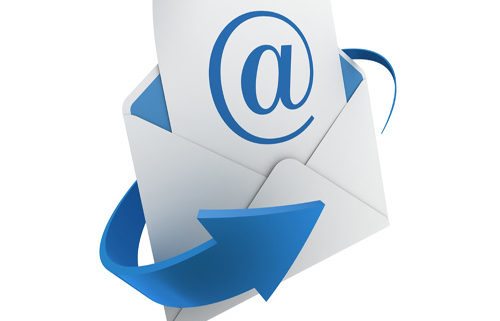Why Email Is Key To Maximizing Owned Media (And Assets) In Digital Marketing
Every company has digital marketing challenges that are unique to their industry, their selling model (direct to consumer/wholesale/hybrid), their technology stack and their organizational structure. But acquiring first-party data to create a true model of customer journey is a struggle that persists across the board.
This post will focus on a topic that I believe is at the heart of a successful addressable marketing strategy: growing email and SMS lists.
More touches generally mean more responses, which is ultimately what we’re after. To be effective, you need to maximize data collection on your owned media.
An email address is the foundational digital currency that allows you to market to individuals, not just in email, but on social networks and through addressable display. It is, therefore, the most important permission to get.
As such, the number one rule is to ask for an email address at every direct customer touch point across all your owned media — point of sale, customer service, website and so on.
A Typical Scenario
If you look at most companies, you will find:
• Fewer than 5% of site visitors transact.
• A passive “signup for email” link exists somewhere on the home page. Some are more prominent than others, but they are often buried, especially if the company is not a retailer or publisher. In the best cases, there is a Lightbox that asks a user to sign up for email, but it usually doesn’t include any real value statement.
• Customer service doesn’t ask for an email address or verify the one on file if they already have it, unless completing a transaction (think travel).
• Point-of-sale systems will be somewhat dependent upon industry, but many companies don’t ask for any information at the point of sale.
• Many use remarketing lists for search ads (RLSA) and retargeting cookies, which are great. But they’re still missing a huge opportunity to collect an email address, tie it to their web analytics package for analysis and later use it for segmentation.
The Resulting Potential Drawbacks
These methods can create a number of problems:
• You are not capturing as many email addresses as you could be by making some minor changes. This not only impacts your email program directly, but it also stifles your ability to create true addressability in other channels.
• You’re not rounding out your data set with other information, such as SMS, which means that you are limiting your ability to create a multi-channel journey for your prospects and customers. If you only have an email address or a cookie, then it is difficult to create an experience across multiple channels.
• You are not optimizing your search bidding if you’re not factoring in that extra value created when people provide their email address.
What To Do
Here’s what you should be doing:
• Actively ask for a mobile number (for SMS) and an email address when visitors come to your site, and clearly state the benefits of providing them. Don’t wait for them to find your link or text box somewhere on the page. (Tip: Make it easy for them to get out of the Lightbox on desktop and mobile. Test this yourself.)
As with many tactics, there are ways to do this well. Immediately hitting someone upon entrance with a value-less signup message and no easy way to get out of the Lightbox will likely drive up your bounce rate.
But if you can improve the Lightbox timing (test delays) and the relevancy of the signup value statement based on information gathered when the person enters the site (e.g., search term), you should see good results and little to no impact on your bounce rate.
• Ask again differently if they dismiss the first Lightbox. Let people browse before asking again, but leverage technologies that incorporate browsing behavior into the message.
So if a visitor is looking at product A, product A can be featured in the Lightbox with a customized message that asks for email to learn more about that product. This tactic can easily help you double your email signup rates.
• Create a simple web application for your customer service agents to enter emails if your current system doesn’t make it easy. When customers and prospects call in, there is a capability to capture an email address and what they called about.
Almost every email service provider (ESP) can be integrated into something like this. It may not be perfect compared with a full platform, but at least you are capturing email addresses.
• Constantly ensure your customer data is current. Leverage the post-login experience to get updated email addresses and SMS information. When people log in to your site, check to see if you have an email address for that person, if it’s valid and if people are responding.
When a person logs in, ask for an updated email address or SMS number if he or she isn’t responding to email, you don’t have one on file, the one you have has been deemed invalid or the person has unsubscribed.
Your ESP has this data. The question is whether or not you can leverage it fast enough. But the rewards are that you have more complete information on your best customers — the ones who are using your site.
Final Thoughts
When people come to your site, a retargeting cookie is vital but it’s critical to create addressability and, if possible, connect your known and anonymous data for greater segmentation and personalization.
It’s important to ask for an email address, at the very least, if not SMS permission. Once you have these, you have the ability to connect with key people and segments across multiple media.
This gives you the ability to leverage most marketing clouds to the fullest. But incorporate the information visitors give you in a smooth way, not in a creepy, in-your-face way. Stay classy!











